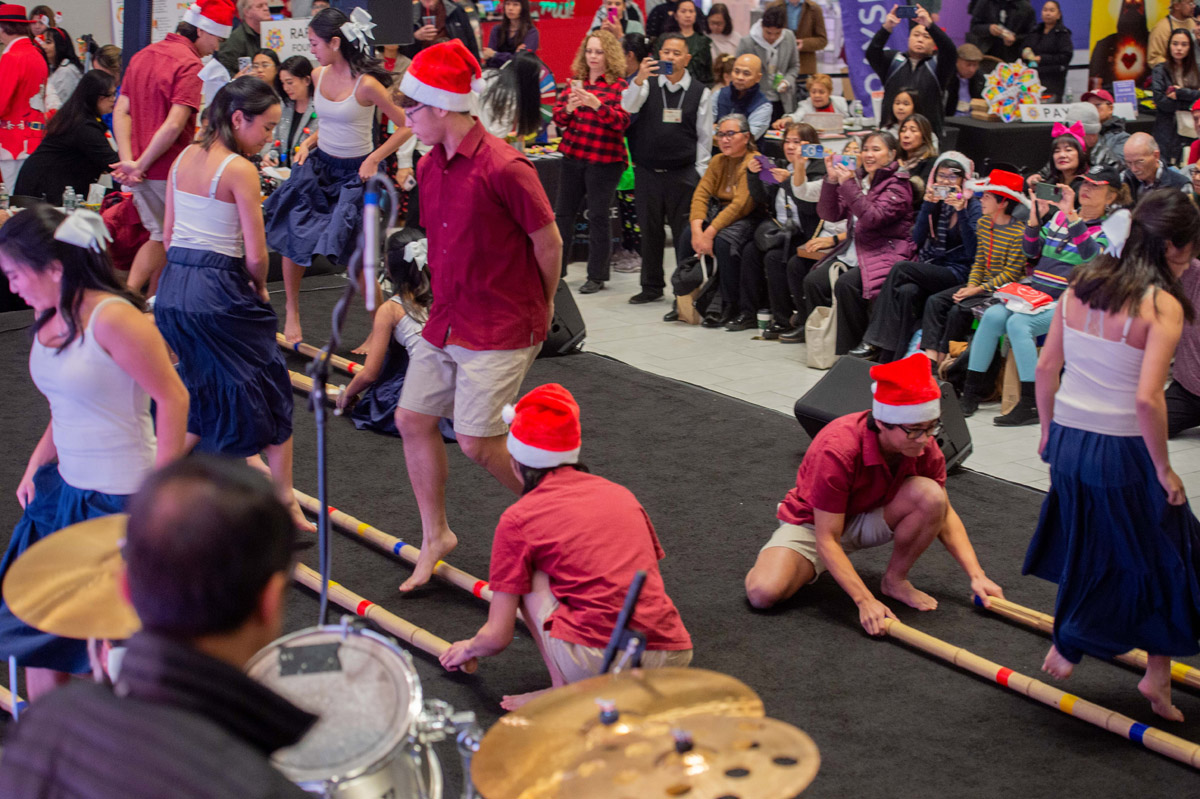Uncover the Intriguing History Behind Simbang Gabi: How Much Do You Truly Know?
By DC
One December dawn in the 1700s, a Spanish friar gathered his farmers and taught them to say a prayer of thanks to God for their generous harvest that year and, hopefully, in the years to come. As the morning sun peeked over the horizon, casting its glow on the dewy fields, the friar led the humble farmers in reciting the prayer he had composed.
“Dear Lord,” they prayed, “we thank you for the bounty you have bestowed upon us this season. Our storerooms overflow with your gracious gift of plenty -- crops to feed our families, to trade and sell. We are humbled by your providence.”
The farmers bowed their heads, some cradling baskets brimming with their harvest, others with tools in hand, dirt still fresh under their fingernails from that morning's work. Around them, the fields stood golden and laden. It had been a good year.
As the friar looked out over the farmers finishing their prayer, a source of deep pride and satisfaction welled up within him. Little did he know that the simple pre-dawn service would ripple through generations and grow into a beloved Christmas tradition.
The birth of Simbang Gabi
Historical records showed that this was the birth of Simbang Gabi, the Filipino Christmas tradition that the young and the old celebrate first thing in the morning for nine straight days in the run-up to Christmas Day.
What began with a handful of farmers has spread to the packed pews of cathedrals and village chapels alike, the night air filled every December with songs of praise as the faithful wind their way through darkened streets for early morning mass.
Through the ages, Simbang Gabi has bound Filipino communities together even when so much else has changed around them. His simple lesson in thanksgiving lives on in every hymn and every candle lit during those nine early dawns --- a nation still praying across the centuries.

Roots of the Christmas tradition
While the friar held the first Simbang Gabi service with Filipino farmers in the 1700s, this Christmas tradition traces its roots back to Spain, Mexico and other Catholic-dominated countries.
As the book “Pasko! The Philippine Christmas” explains, the farmers were already accustomed to pre-dawn rituals before their fieldwork. By incorporating these familiar cultural elements with Catholic rites, the missionaries aimed to effectively spread their religion.
The Masses were held in the darkness of early morning, lit only by candles, due to prohibitions on nighttime services. These candlelit dawn Masses were precursors to "Misa de Aguinaldo" in Spain and the Americas.
Over time, the mixture of indigenous peasant rituals and imported Catholic traditions wove into the fabric of Philippine Christmas. What originated from the friar’s lessons in gratitude grew into the enduring Simbang Gabi tradition -- now a cherished Advent celebration that bonds communities across generations.
Roots in older Catholic prohibitions
Jesson Gonzaga Allerite, a historical researcher, notes in an article for the Catholic Bishops’ Conference of the Philippines that there were prohibitions in place during those times around holding Mass at night.
As a result, the early Simbang Gabi services, also called “Misa de Gallo” or “Mass of the Rooster,” took place amid darkness in the early dawn hours. The masses were lit by candles to accommodate the schedules of farmers and laborers needing to work afterwards.
So while that first celebratory prayer service in the mid-1700s marked Simbang Gabi's origins as a distinctly Filipino tradition, the need for pre-dawn masses had roots in older Catholic prohibitions against nighttime services. Illuminated only by candlelight, these dark early morning masses allowed those with sunrise work obligations to fulfill their spiritual and practical needs alike.
This account lends insight into why the tradition developed around such early hours, with the blackness of early morning punctuated by candles -- a lighting choice born of necessity, but which likely also contributed to the mystical aura of Simbang Gabi's distinctive Advent masses.
This helps trace Simbang Gabi's lineage back even further through the darkened dawn services enabling workday worship for laborers in heavily Catholic communities.
Another story behind Simbang Gabi
The early pre-dawn candlelit masses are also referred to as "Misa Aurea" or the golden Mass. These services are considered precursors to “Misa de Aguinaldo” traditions later celebrated in Spain, Latin America, and the Philippines.
In 2012, Father Gennie Diwa shared that Simbang Gabi was first brought over by Catholic missionaries from Mexico. At Christmastime in Mexico, farmers would attend Mass in honor of the Virgin Mary at dawn before heading to the fields for a day's work.
So while the exact beginnings are debated, Simbang Gabi arose from a blending of Old World Catholic rituals meant to meet the practical needs of agrarian communities. Darkness on the horizon required candlelit services, with amber flames ushering in masses for farmers seeking spiritual nourishment alongside earthly sustenance from the land.
Whether tracing the first Filipino observance to Spanish missionaries or Mexican priests, Simbang Gabi brought Old and New Worlds together through candle flames in predawn hours -- the Golden Mass binding across continents and centuries.
The farmers were asked to sing during the Mass, which would then be followed by a simple breakfast offered by the friar. This practice of celebrating the dawn Mass each morning blended pagan customs and Catholic rites -- incorporating local indigenous traditions like communal singing and meals with the imported Christian worship rites.
As missionaries introduced the custom of dawn Masses from Mexico to the Philippines, Filipino Catholics enthusiastically adopted the tradition -- while also adding their own cultural flavor to it.
Father Diwa explained that Mexicans traditionally held these Masses early in the morning to kick off the day's farming work, honoring the Virgin Mary and Christmas over nine straight days leading up to December 25th.
So the practical schedule meeting the needs of agrarian villages got preserved and accentuated, with Filipinos making Simbang Gabi their own unique expression of Mexican-introduced Advent tradition.
The two cultures came together at daybreak, with Filipino melodies and meals enhancing Mexican Christmas customs under candlelit dawns.
This interleaving of cultures and purposes -- spiritual invigoration and agricultural necessity -- created the tapestry that became time-honored Simbang Gabi.
Different customs, different places
From the lively after-prayer gatherings to unique regional customs, each province in the Philippines adds its own flair to this cherished observance.
In Bicol, carolers adorned as shepherds grace the start of Simbang Gabi, serenading with “villacincos” to the eclectic rhythm of Muslim gongs and Spanish guitars.
Bohol introduces “ige-ige,” a pageant where carolers portray Joseph, Mary, and innkeepers, commemorating the nine-day journey with performances that symbolize the drive to find lodging—”igehan”' in local dialects.
Cebu kicks off dawn Masses with jungle warriors and city clowns, showcasing acrobatics in the streets, their faces adorned with black dye—a unique and spirited display.
In Mindanao and remote areas, the Masses proceed without priests, an initiative by the CBCP to connect with Catholics in regions facing a shortage of clerics.
Beyond the Philippines, Simbang Gabi's essence transcends borders. In the United States and Singapore, Filipino migrants uphold these traditions.
Seattle, for instance, reveres Simbang Gabi as a sacred ritual symbolized by the luminous parol. The archbishop's profound experience in 1997 led to its integration within the archdiocese, fostering a cherished annual observance.
In New York, Simbang Gabi starts earlier in December. In 2023, it’s from December 4 to 12.
What everybody has in common is the salo-salo after the Mass -- the serving of good food to prepare the farmers for the day’s work ahead.







